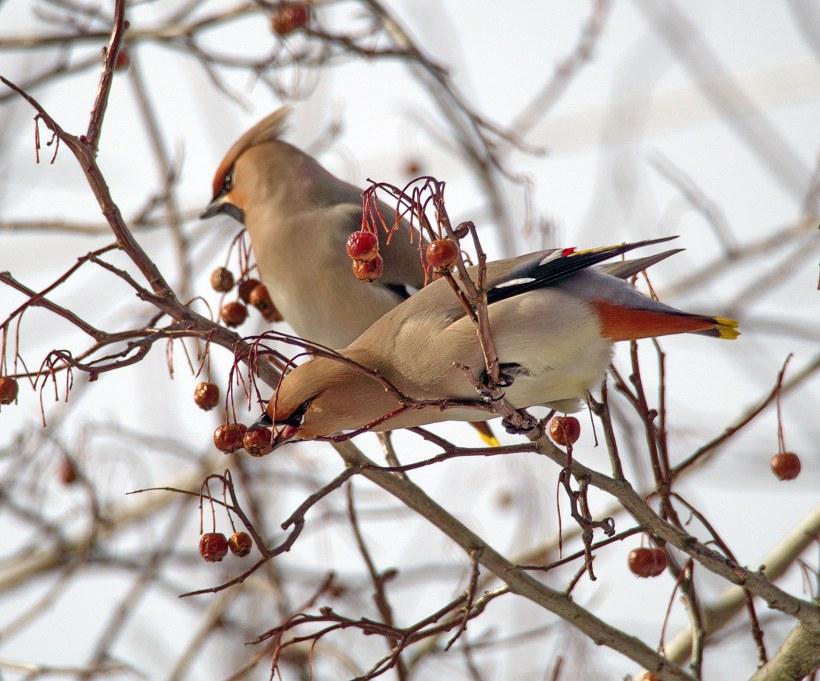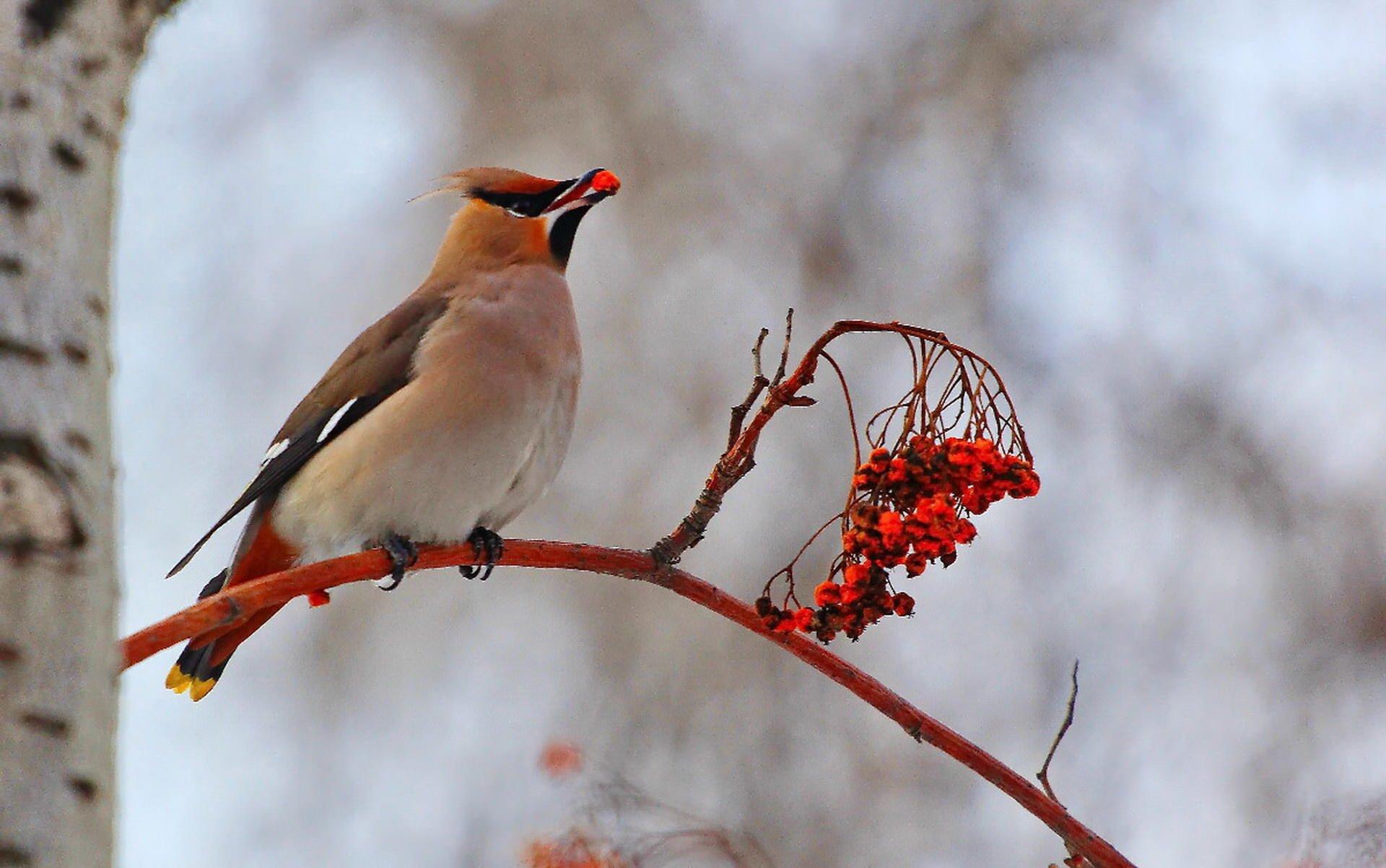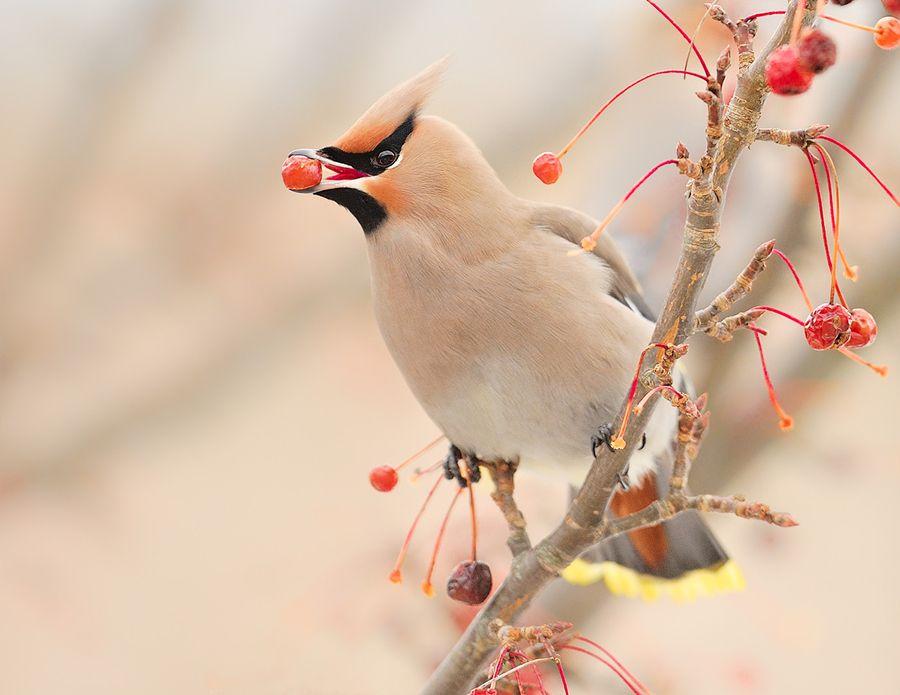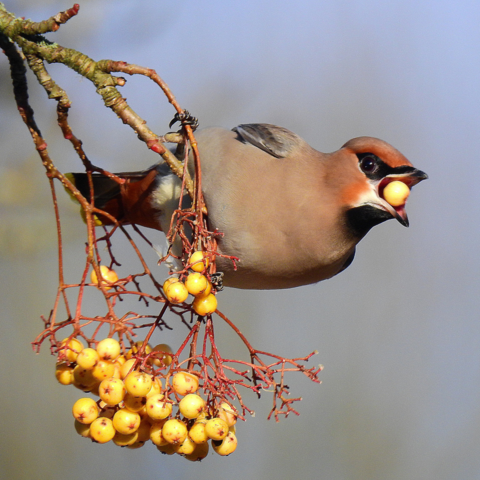Bombycilla Garulus, commonly referred to as the Bohemian Waxwing, is a captivating bird species that never fails to mesmerize with its striking appearance and intriguing behavior. In this SEO-optimized article, we will delve into the enchanting world of Bombycilla Garulus, exploring its distinctive features, habitat preferences, behavioral patterns, and the captivating aspects that make it a cherished species among bird enthusiasts and nature lovers.

The Bohemian Waxwing is a medium-sized songbird with a plump body, characterized by its unique plumage. It showcases a sleek combination of gray, brown, and pale yellow feathers, with striking accents of black around the eyes and wings. One of its distinguishing features is the vivid red wax-like tips on some of its secondary wing feathers, which add to its allure. The sleek crest atop its head adds an elegant touch to its appearance.

Bombycilla Garulus can be found in the northern parts of North America, Europe, and Asia. It is known for its preference for boreal forests, taiga regions, and coniferous woodlands. During the breeding season, it seeks out remote areas with an abundance of fruit-bearing trees and shrubs. However, during winter, it forms large flocks that venture into various habitats in search of food, including urban areas with fruit-bearing ornamental trees.
The Bohemian Waxwing has a specialized diet that primarily consists of berries and fruit, making it a frugivorous species. It demonstrates remarkable feeding behavior, often forming large flocks that move in a coordinated manner to exploit food sources. They can be seen perched in trees, where they pluck fruit with precision and consume it with delight. This feeding behavior and reliance on fruit make them an important disperser of seeds in their ecosystems.
During the breeding season, Bombycilla Garulus forms monogamous pairs. They build cup-shaped nests made of twigs, grass, and moss, often lined with soft materials. These nests are usually placed in the branches of trees, providing a safe haven for the eggs and hatchlings. Both parents actively participate in incubating the eggs and raising the young. The breeding season is a delightful time to observe the fascinating courtship displays and listen to their melodious calls.
The Bohemian Waxwing population is currently stable, with no immediate threat to its survival. However, the conservation of its habitats, especially the boreal forests and taiga regions, remains crucial. These habitats are under constant pressure due to human activities, emphasizing the need for responsible land management practices and the preservation of fruit-bearing trees and shrubs.

Conclusion:
Bombycilla Garulus, or the Bohemian Waxwing, is a truly enchanting bird species that captivates with its stunning appearance, feeding behavior, and habitat preferences. From its unique plumage to its coordinated flock movements, this species presents a delightful spectacle for bird enthusiasts and nature lovers. By understanding and appreciating the remarkable characteristics of the Bohemian Waxwing, we can contribute to its conservation and ensure its presence in our ecosystems for generations to come.






